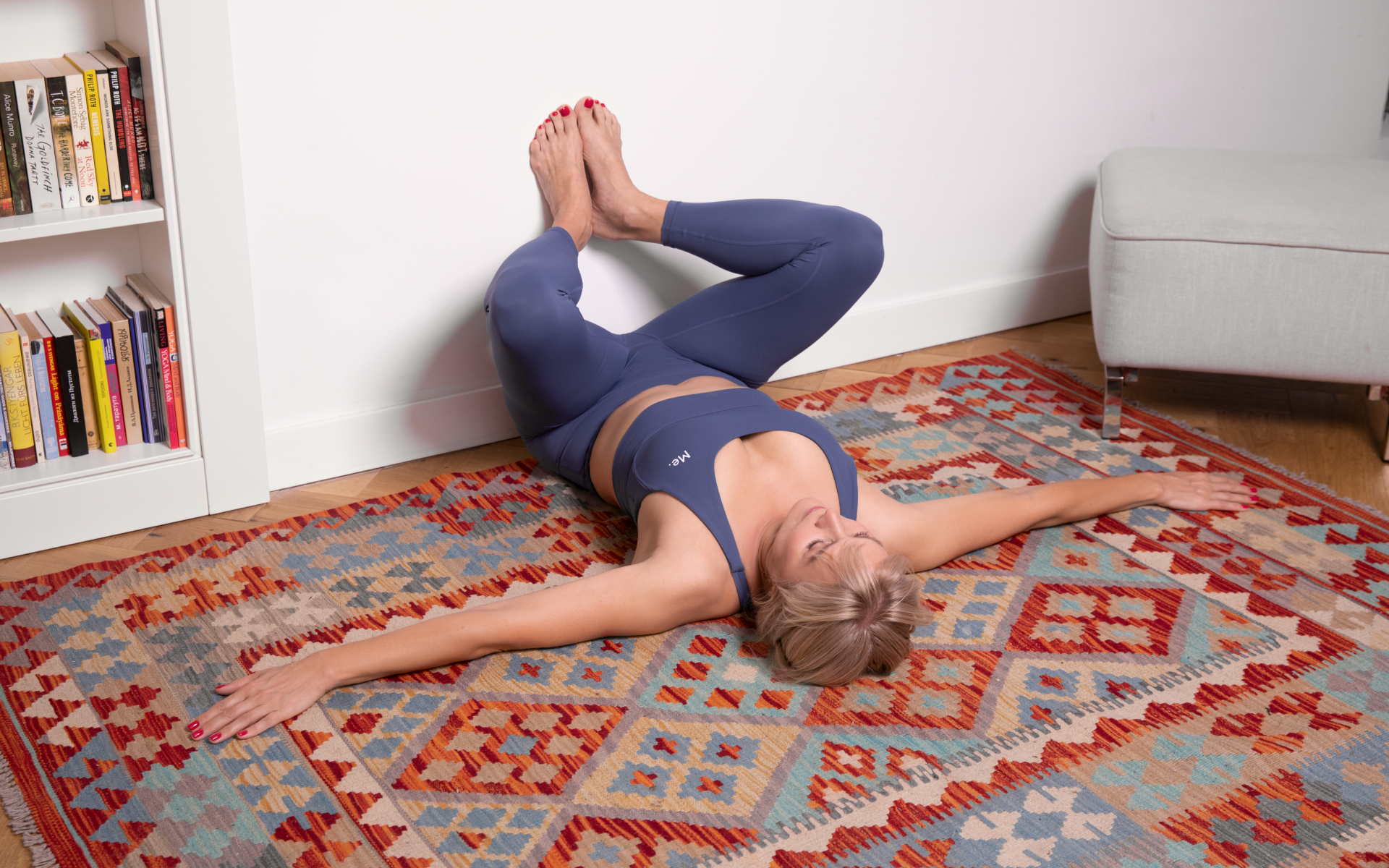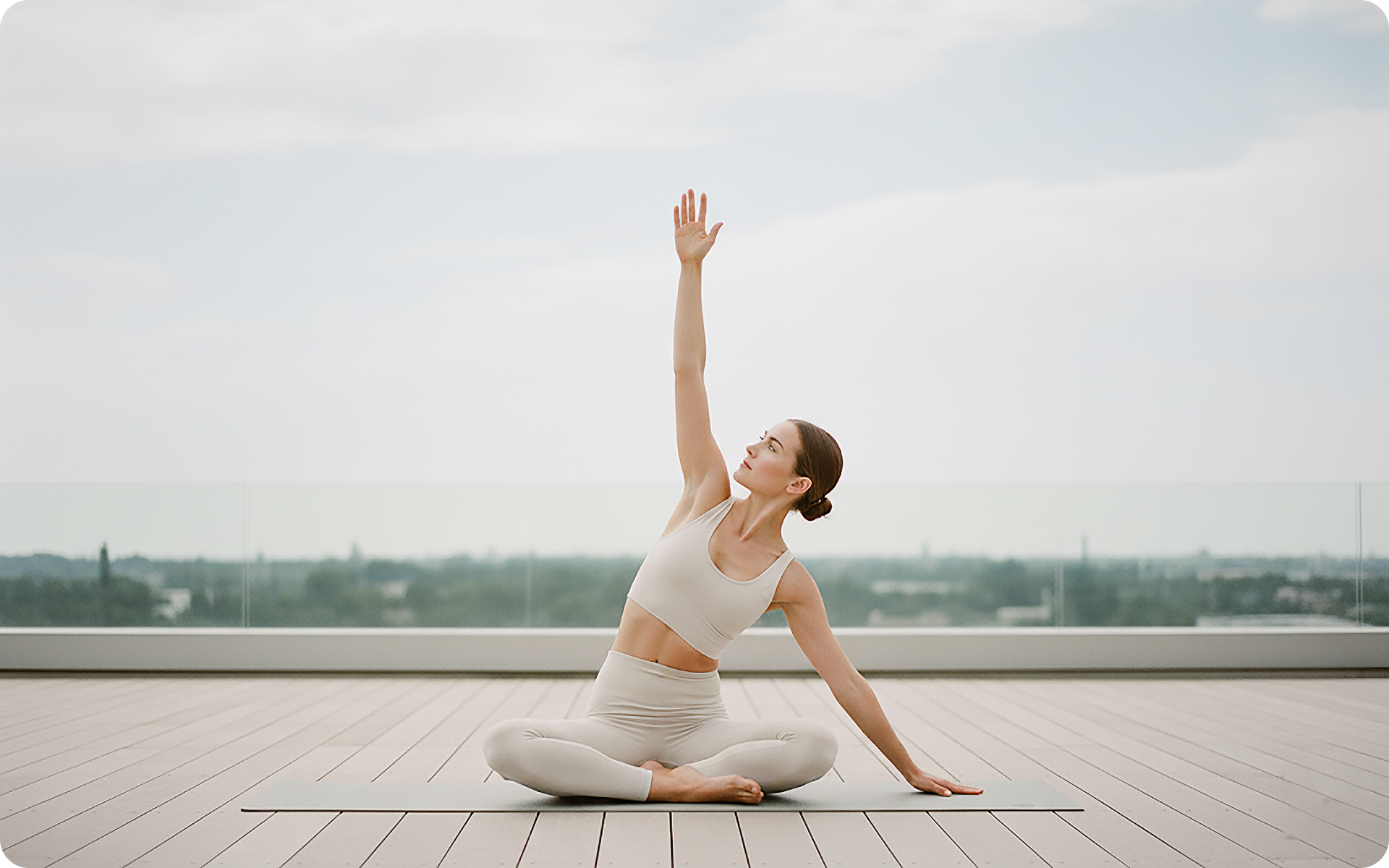Welcome to the comprehensive guide on core strengthening with an unconventional twist – wall walks. Did you know that strong core muscles play an important role in promoting good posture and reducing lower back pain?
It’s true! The benefits of core strengthening exercises are almost limitless (2). Wall walks in particular are an excellent way to engage many muscles in your body simultaneously, including your core muscles. If you’re ready to take your fitness game to the next level and challenge your core, this guide is for you.
In this guide, we’ll start by discussing the basics of wall walks and why they are beneficial for core strengthening. We’ll also cover the correct form and safety measures you should consider before you start this exercise. Finally, we’ll explore some variations of wall walks and some progressions you can use to further challenge your core.
What Is a Wall Walk Exercise?
Wall walk exercise is a functional movement that involves starting from a plank position on the floor, then walking your feet up against a wall while keeping your arms extended. Once your feet are on the wall, you’ll start walking your hands closer to the wall while keeping your feet in place, ultimately reaching a vertical position, or close to it.
This is a challenging exercise that uses several muscle groups, including your shoulders, chest, abs, and legs. Wall walks can be performed with or without additional weight, which makes them a versatile exercise that can be adjusted to suit most fitness levels. If you’re not at a point where you can perform a wall walk yet, that is totally okay! You can start with a normal plank and work your way up.
Wall Walks Muscles Worked
Wall walks are a compound exercise that targets multiple muscle groups. Here are the primary muscles that are worked during wall walks, along with their benefits:
Shoulders
Wall walks involve the anterior deltoids, which are the front part of your shoulders. Training the shoulders can reduce the risk of shoulder injury and improve upper-body mobility.
Triceps
The triceps are primarily responsible for elbow extension. During wall walks, the triceps help keep your torso raised above the ground. Due to the nature of the tricep’s involvement in this movement, they won’t get much stronger. However, their endurance may increase.
Read More: Squat, Throw, Catch: The Wall Ball Workout Guide You Need To Gain Muscle And Lose Fat
Chest
The chest muscles, specifically the pectoralis major, perform a similar role to the triceps during the wall walk exercise. Wall walks may support greater muscular endurance, but it’s unlikely they’ll increase pectoralis major strength in any meaningful way.
Core Muscles
Wall walking demands a great deal of stabilization from the core muscles, including the rectus abdominis, transverse abdominis, and obliques. Strengthening the core can improve posture, reduce the risk of lower-back pain, and enhance overall stability.
Legs And Glutes
The hamstrings, quadriceps, and glutes will help you maintain your legs straight behind you when you’re pressed up against the wall. Increasing the endurance of these muscles can be beneficial in many daily activities, such as walking and standing for prolonged periods.
How To Do Wall Walks for Beginners
Here is a step-by-step guide on how to do wall walks for beginners:
- Start in a plank position with your feet roughly shoulder-width apart and your hands directly under your shoulders and your arms fully extended below you.
- Slowly walk your feet toward the wall while keeping your hands in place until you reach a 45-degree angle.
- Move one hand closer to the wall while shifting your weight to the other hand.
- Move your other hand toward the wall while maintaining your balance on one hand.
- Repeat the hand-walking process until you reach a vertical position, with your chest against the wall.
- Hold the position for a few seconds and then walk your hands back down to the starting position.
- Complete the desired number of repetitions.
Here are some additional tips to remember when doing wall walks:
- Make sure to keep your core tight throughout the movement to avoid sagging your hips.
- Take your time and focus on maintaining proper form rather than speed.
- Keep your head and neck in a neutral position and avoid looking up or down.
- Aim for a smooth, controlled motion, rather than jerky movements.
It’s important to listen to your body and adjust the exercise according to your fitness level. Once you feel comfortable with the basics, you can advance this movement by holding it for a longer period of time or transitioning to a more difficult variant.
Wall Walk Alternatives
There are three common types of wall walks:
- Standard Wall Walk: With the standard wall walk, you begin in a plank position, then walk your feet up against the wall while keeping your arms extended. Once your feet are on the wall, you can start walking your hands closer to the wall while keeping your feet in place, ultimately reaching a vertical position before walking back down.
- Plank to Pike Wall Walk: With this variation, you start in a plank position facing away from the wall, then walk your hands out until you’re in a pike position, with your hips in the air. From there, you walk your hands back toward the wall until you reach a mostly vertical position with your chest against the wall.
- Handstand Wall Walk: This is the most advanced and challenging variation of wall walks and is the best for increasing muscular strength. With handstand wall walks, you start in a handstand position facing away from the wall and walk your hands toward the wall, moving your feet up the wall as you go until reaching a fully vertical position. Make sure you take safety precautions if you’re performing this variant due to the risk of falling. Always perform this movement over a stable and soft impact-absorbing surface.
Each variation of wall walks offers unique benefits and challenges, which makes them all excellent exercises to add to your fitness routine. Start with the standard wall walk and gradually work your way up to more advanced variations as your strength and stability improve.
When it comes to weight loss, progress is made by inches, not miles, so it’s much harder to track and a lot easier to give up. BetterMe app is your personal trainer, nutritionist and support system all in one. Start using our app to stay on track and hold yourself accountable!
Are Wall Walks a Good Exercise?
Wall walks are most definitely an excellent exercise that offers several benefits (1). Let’s look at why you should make wall walks part of your regular workout regimen.
Full Body Workout
Wall walks are a functional movement involving your arm, shoulder, chest, abdominal, and leg muscles at the same time.
As you climb upward, your core muscles must work hard to prevent your hips from sagging or overarching, helping strengthen your entire midsection.
In addition, the exercise demands a great deal of stabilization from your shoulders and triceps, which makes it an effective upper-body workout.
Improved Core Strength and Endurance
As previously mentioned, wall walks are an effective exercise for strengthening your core muscles. The exercise does an excellent job of targeting the rectus abdominis, transverse abdominis, and obliques, which can help improve stability and balance.
Improved Mobility
Wall walks also help target the muscles that are responsible for upper-body mobility, improving shoulder mobility. If you sit for prolonged periods or struggle with shoulder mobility, incorporating wall walks into your routine can help increase your quality of life in the long term.
Better Balance and Overall Stability
Wall walks demand a great deal of body control and coordination. The exercise requires you to maintain proper form while moving through different positions, which translates into improved balance and stability in everyday activities.
Better Body Control
Wall walks demand a great deal of body control and coordination. The exercise requires you to maintain proper form while moving through different positions, which can translate into improved balance and stability in everyday activities.
Stress Less, More Happy
Finally, wall walks are an excellent way of reducing stress and anxiety while also improving your mental health. It requires you to think about them in a way that best serves you. The challenge of the exercise combines physical and mental aspects and gives you the feeling of accomplishment once you’ve completed it, which boosts your self-confidence.
Read More: The Ultimate Wall Angel Exercise Guide: Techniques, Benefits & Muscles Worked
What Are the Benefits of a Handstand Wall Walk?
Performing handstand wall walks offers several additional benefits in comparison to other wall walks. Here are some of the ways they can benefit your fitness routine:
- Increased Upper Body Strength: Handstand wall walks primarily target the shoulders, upper chest, and triceps. This variant forces you to lift a higher percentage of your body weight, making it more effective at increasing strength than other variants.
- Improved Core Strength: The core muscles work overtime to maintain balance and proper form when you perform a handstand wall walk. This exercise is a fantastic way to build functional core strength.
- Enhanced Balance: Handstand wall walks require your body to maintain a stable position on your hands and develop body control.
- Sense of Satisfaction: Mastering the handstand wall walk can boost your self-confidence and self-esteem, which will make future exercises seem less daunting. You did something difficult that’s worth being proud of.
- Shoulder Mobility: Regularly performing handstand wall walks can lead to better shoulder mobility, which can improve athletic ability and reduce the risk of certain injuries.
If you wish to free yourself from all the extra pounds that have been weighting you down for way too long, start using the BetterMe app and overhaul your entire life!
The Bottom Line
Incorporating wall walks into your workout routine can have several benefits, including improved upper-body strength, better core stability, enhanced mobility, and reduced injury risk.
Whether you’re a beginner or an advanced fitness enthusiast, wall walks offer versatile exercises that can be adjusted to suit most fitness levels. In addition, with different variations of wall walks, you can customize your workouts to target specific muscle groups, depending on your training goals.
DISCLAIMER:
This article is intended for general informational purposes only and does not serve to address individual circumstances. It is not a substitute for professional advice or help and should not be relied on for making any kind of decision-making. Any action taken as a direct or indirect result of the information in this article is entirely at your own risk and is your sole responsibility.
BetterMe, its content staff, and its medical advisors accept no responsibility for inaccuracies, errors, misstatements, inconsistencies, or omissions and specifically disclaim any liability, loss or risk, personal, professional or otherwise, which may be incurred as a consequence, directly or indirectly, of the use and/or application of any content.
You should always seek the advice of your physician or other qualified health provider with any questions you may have regarding a medical condition or your specific situation. Never disregard professional medical advice or delay seeking it because of BetterMe content. If you suspect or think you may have a medical emergency, call your doctor.
SOURCES:
- 5 Benefits of Compound Exercises (2016, acefitness.org)
- The real-world benefits of strengthening your core (2012, harvard.edu)













